By clicking a retailer link you consent to third-party cookies that track your onward journey. This enables W? to receive an affiliate commission if you make a purchase, which supports our mission to be the UK's consumer champion.
How to paint a room
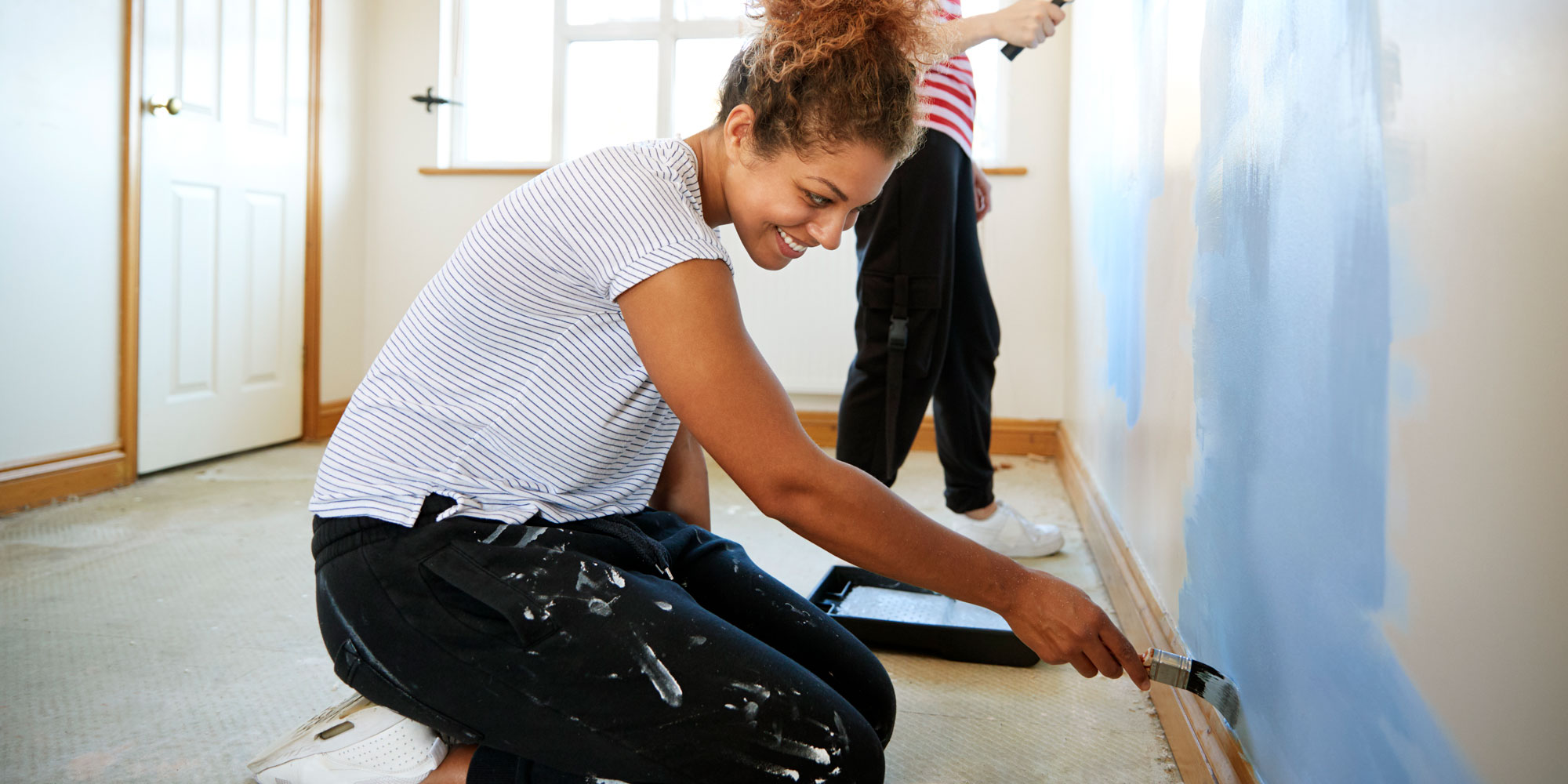
In this article
- Step-by-step: painting a room
- What is the correct order to paint a room?
- How to paint a ceiling
- How to paint skirting boards or doorframes
- How long does it take to paint a room?
- How much does it cost to paint a room?
- How much does it cost to hire a painter and decorator?
- How to clean paint brushes and rollers
Painting a room might seem straightforward, but to guarantee a result you’re happy with, it’s essential to use the right equipment and techniques for a clean, even finish.
For one, you'll need to think about how to avoid making a mess – tucking masking tape around socket edges and flooring is one way, while laying down dust sheets and keeping a damp cloth nearby for quick clean-ups can also help. When applying your paint, rushing the job or applying uneven pressure can cause streaks and uneven coverage.
We explain the steps to work through as you transform a tired-looking room into a beautiful space, with expert tips from Which? Trusted Traders.
Be inspired to make home improvements. Sign up for our Home newsletter, it's free monthly
Step-by-step: painting a room
1. Prepare the room (and your paint)
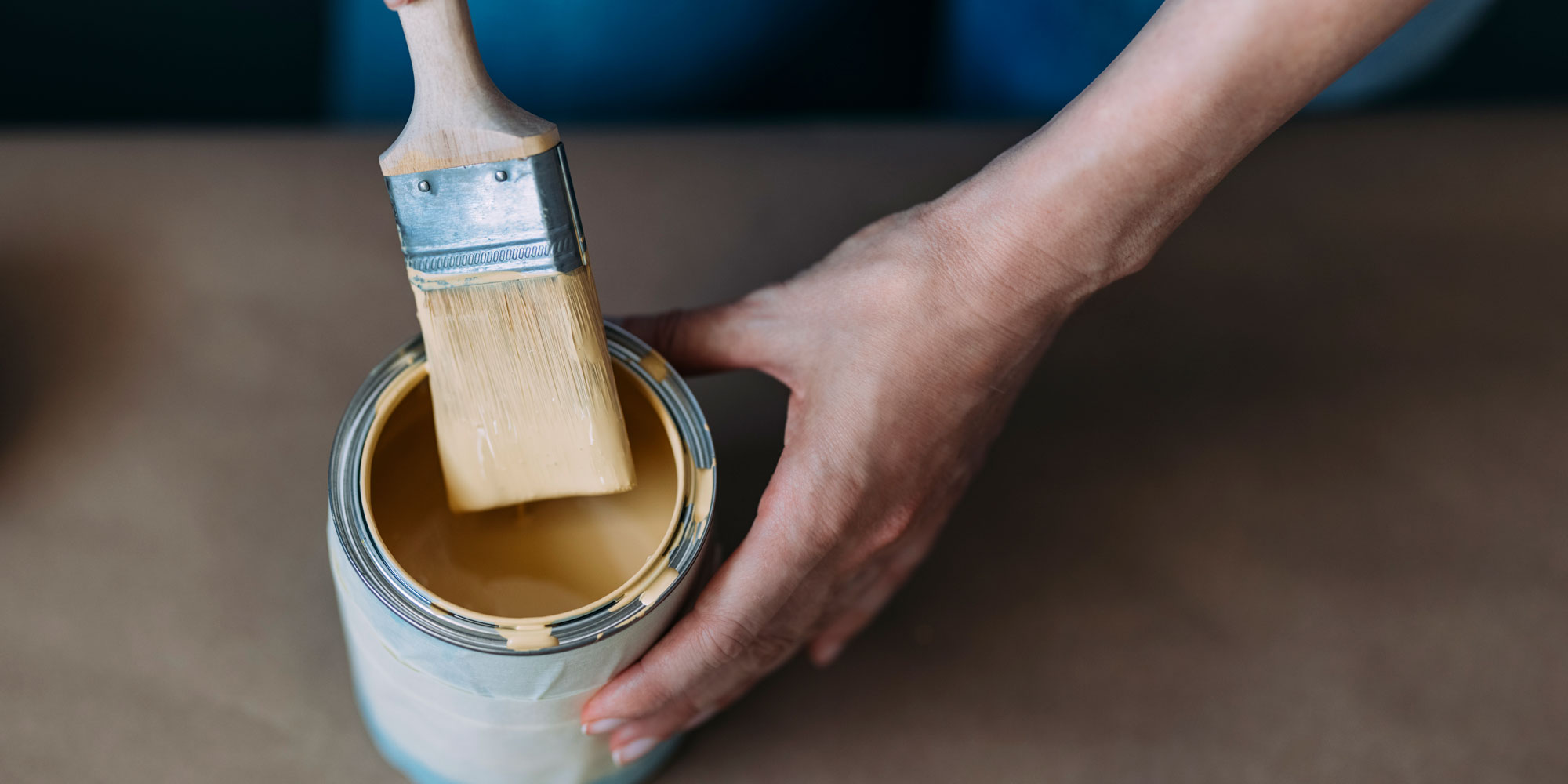
Before you reach for your brush, you’ll need to clear and cover the area to avoid damage from drips or spatters. Remove as much of your furniture and ornaments as possible from the room, then cover the floor and anything you can’t move with protective plastic or dust sheets.
You should be able to find large dust sheets online and in-store for less than £10. Cotton dust sheets are typically more absorbent, while polyester covers are more durable and water-resistant.
If you’re planning to protect areas you don’t want painted with masking tape, use the best tape you can afford – and be aware that it might still allow some paint to seep underneath. A single roll of painter's tape typically costs around £5 and works to protect walls, wood trim and glass panels. An alternative is a painting shield, which costs about £5 and can be reused. You hold the shield with one hand to mask an area, while you paint with the other hand.
Make sure you stir your paint before applying it to any surface. This helps prevent colour differences between the top and bottom layers of the paint. It also helps break up any lumps in the pot, which could harden on the wall and cause bumps in the finish.
2. Prepare the surface
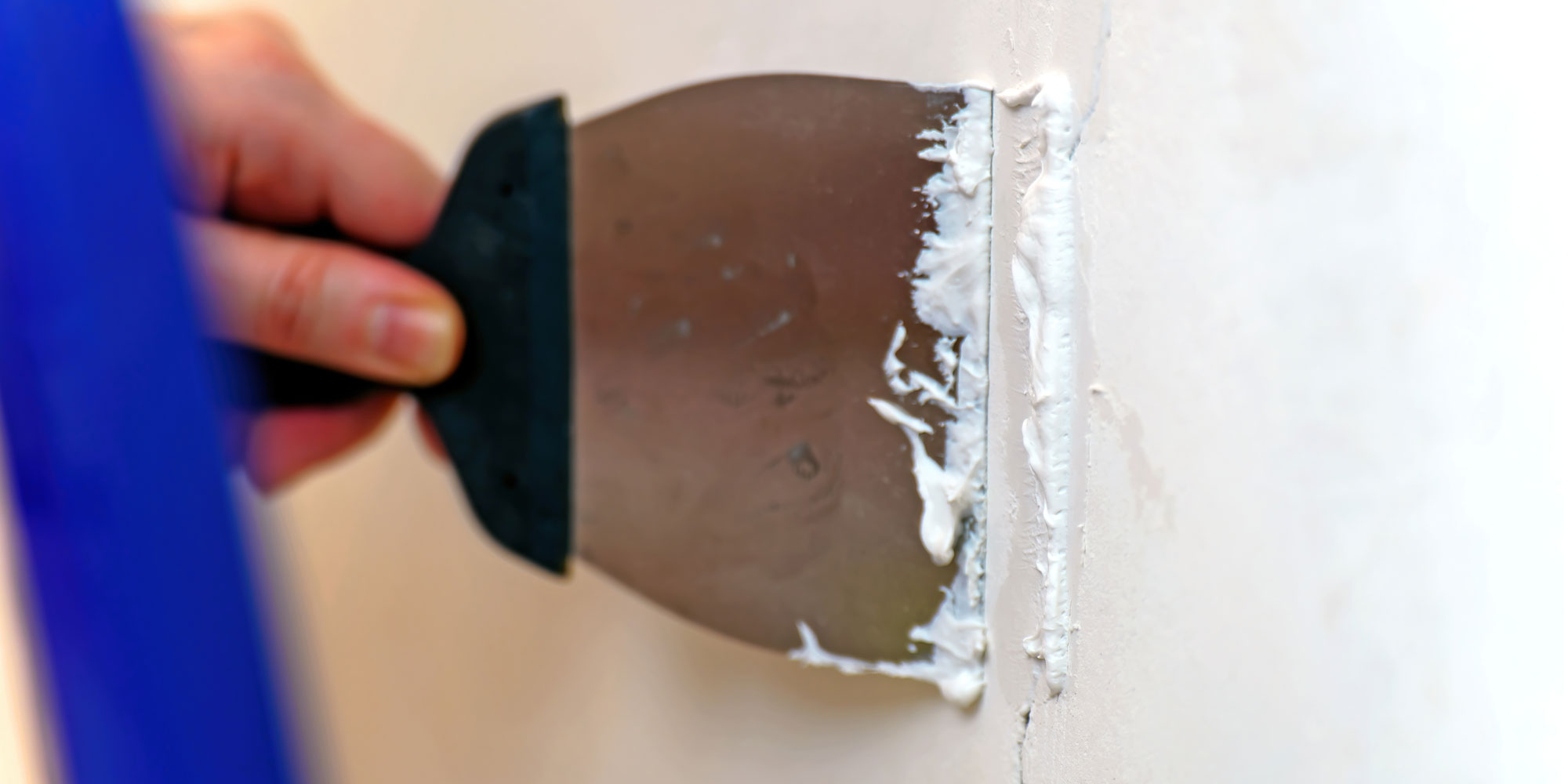
The surfaces you're painting need to be clean, dust-free and completely dry before you get started.
If you spot stains, such as grease or watermarks, treat these with a shellac-based stain blocker product to seal them in, before you start painting. Missing these spots can cause the marks to show through new paint and cause discolouration, so it's always worth checking.
For hairline cracks in the ceilings or walls, use a knife or old screwdriver to enlarge the crack slightly before filling – giving the filler more space means it won’t fall out as it dries. If you need to deal with a hairline crack in a corner or around woodwork, use a cartridge gun to apply decorative caulk (not silicone). Squeeze it into the gap and carefully smooth it with a wet finger or sponge. Allow it to dry according to the manufacturer’s instructions and remember that you can overpaint most varieties within an hour.
3. Turn off the electrics
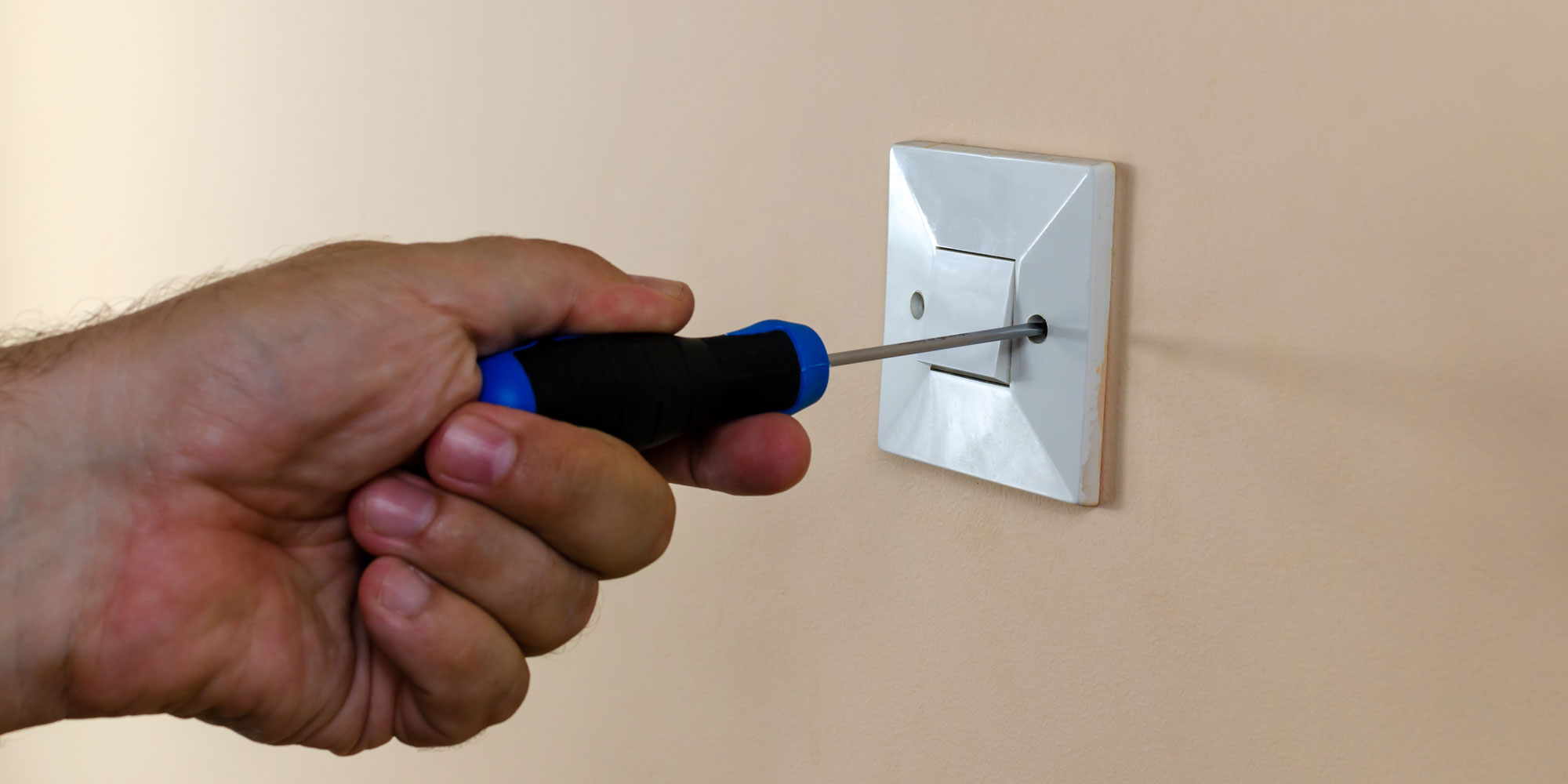
You need to be safe before you start painting the room, so consider switching off the mains power if you're tackling areas near electrical fittings or plug sockets. Alternatively, you can cover fittings with plastic or tape to keep them protected against splashes.
Depending on the space you're painting, you might benefit from using a battery-operated lamp so you can paint around electrical fittings but still have a light source to help you.
4. Cut in
Now that you've prepared your surfaces and grabbed your equipment, it's time to start applying your paint. Before dealing with larger spots, you need to 'cut in' – this means painting the areas that are too tight for large rollers. For example, areas where the walls meet the ceiling, corners, and the edges of windows and doors.
'It's good to cut in before you roll larger areas as you can feather the paint (blend the edges),' says
Adam Williams of
Don't overload your brushes while cutting in as this will cause drips. Press your brush against the wall at an angle and try and keep your hand as steady as possible. Keeping a damp cloth within reach will help you deal with any stray paint marks as you go.
Always cut in while the ceiling is still wet. You can quickly get around the ceiling edges using a 2-inch brush or a mini roller – a small step or ‘hop up’ will help with this. You might also want to use masking tape while cutting in to form neat edges, but this comes down to personal preference.
5. Roll the walls
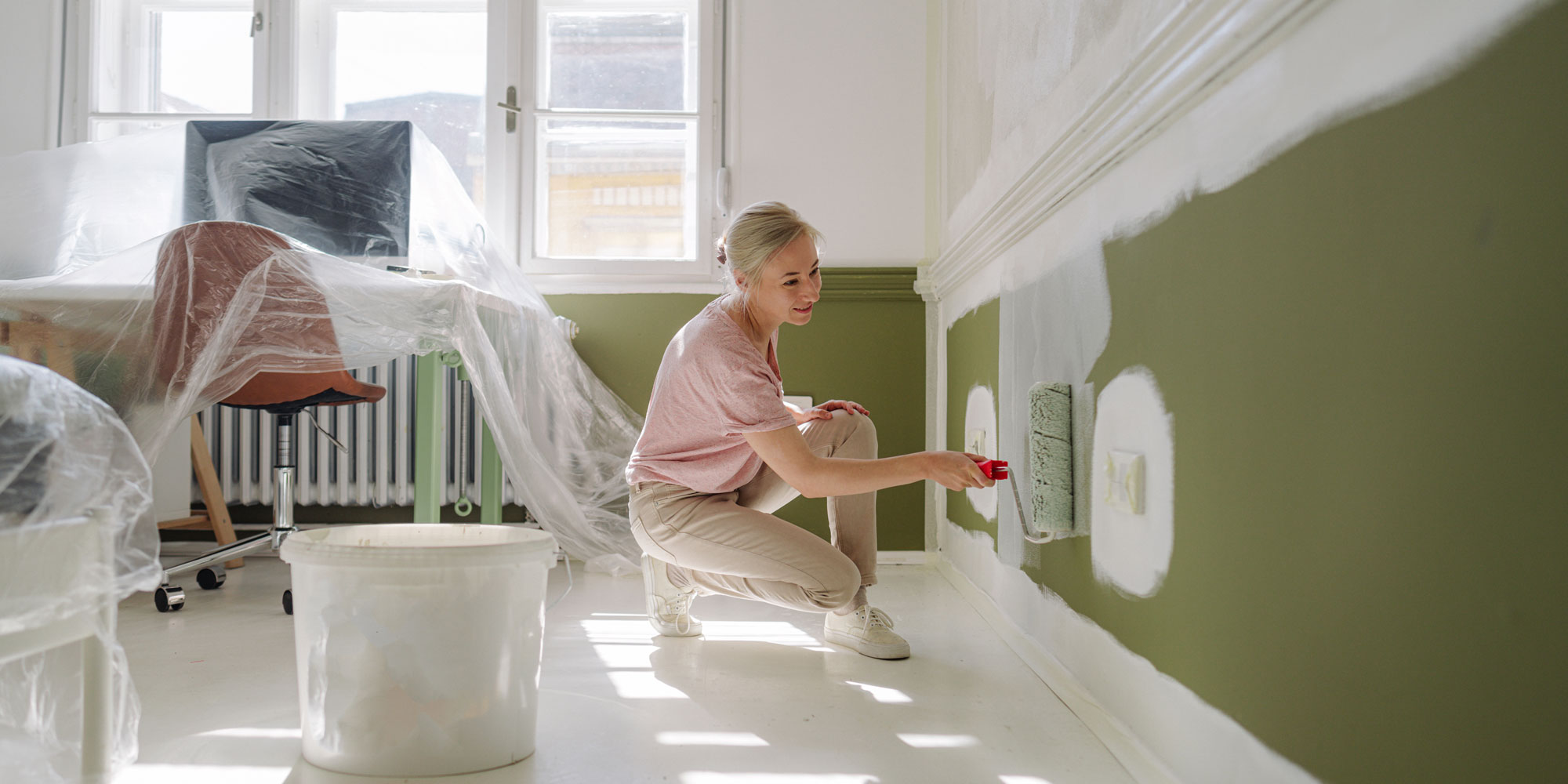
Compared to using a brush, working with a roller will save you plenty of time if your technique is sound. We suggest using a brush with a telescopic handle, allowing you to reach higher areas without a ladder.
'Use a short pile roller and don't put too much paint on,' says Ben.
But don't allow the roller to become low on paint, either, adds Adam: 'The general rule is to paint 1 square metre and then re-load the roller. But remember to consider how porous the surface is.'
When using a roller to paint your room, remember the following:
- Apply the first coat of paint horizontally along the walls, then switch to applying the second coat vertically – changing the direction helps achieve full coverage in different lighting conditions.
- Ensure you keep a wet paint edge while you are working – if you don't, you'll get a 'shut', which is a line created where you overlap and have let the leading edge dry. This means that once you start, you cannot stop until the wall or ceiling is completed.
- If you notice the ceiling starting to peel, stop painting – continuing to use your roller will cause more damage and deposit the peeled paint onto other areas. You will need to paint the ceiling with specialist anti-peel paint before reapplying the top coat.
- Be careful not to get ceiling paint on the walls – the white ceiling paint may ‘flash’ through the new wall colours.
Make sure you leave four hours between coats to prevent peeling, and allow the paint to dry before removing any masking tape from around fittings.
Are cheap rollers any good?
Investing in an affordable roller will help you keep costs down as you tackle your DIY project, but be aware of the potential downsides. Cheap rollers might not hold as much paint.
'Generally speaking, cheap rollers aren’t great, as they tend to shed fibres much faster than higher-quality rollers,' says Adam.
If you're shopping online, consult customer reviews before parting with your money.
6. Leave to dry
With your walls freshly painted, it's time to let them dry before applying a second coat.
The time you need to wait before applying a second layer varies depending on the type of paint used: 'Oil-based paint dries overnight, while water-based paint can be repainted the same day,' says
Best washable paint: our experts have tested a selection of paints from Dulux, Frenchic, Lick and other big-name brands
What is the correct order to paint a room?
With any decorating project, it's generally best to begin at the top and work your way down.
Tackling surfaces in a specific order helps you avoid accidentally getting paint on areas you’ve already finished. For example, if you paint the ceiling last, you might end up with splatters on the walls.
We suggest the following order:
- Start with the ceiling
- Move to the walls
- Deal with the woodwork
- Finish with areas near the floor.
This order should give you a more professional finish and help you avoid overlapping.
How to paint a ceiling
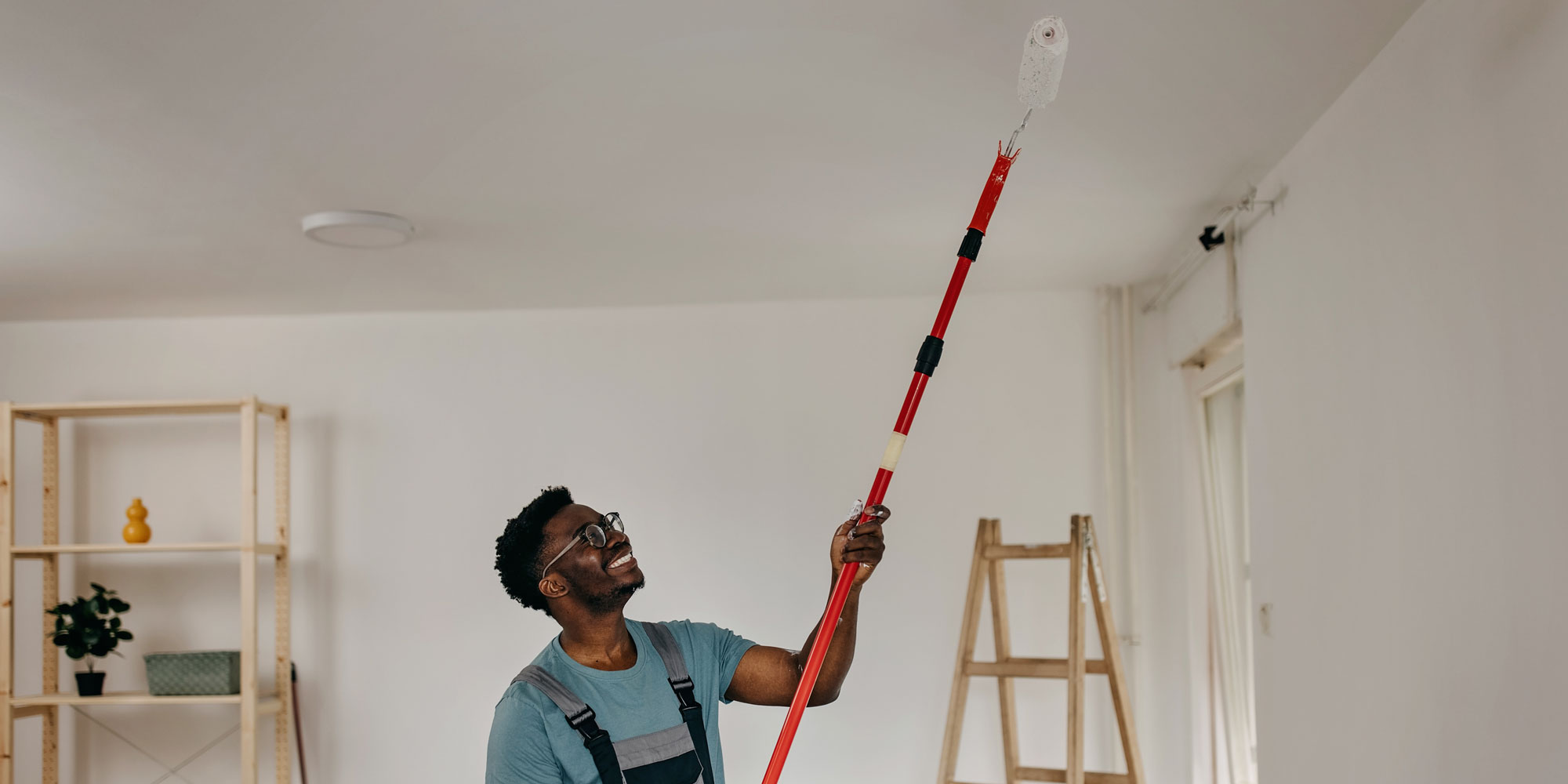
Start by scraping away any flaking paint or other lumps, as this will create a smooth, even surface for your new coat of paint.
'I suggest using a pole sander to de-nib the surface,' says Adam. 'Apply a minimum of two coats of paint.'
We suggest covering any light fittings in the ceiling with low-tack (gentle adhesive) masking tape to keep them free from paint. If you’re planning to paint the walls next, you might want to cover the wall fittings as well.
You should use ceiling-specific paint (check the side of the tin), as it's often thicker than wall paint and designed to reduce light reflection. Plus, it typically has a matte finish that helps to hide imperfections.
How to paint skirting boards or doorframes
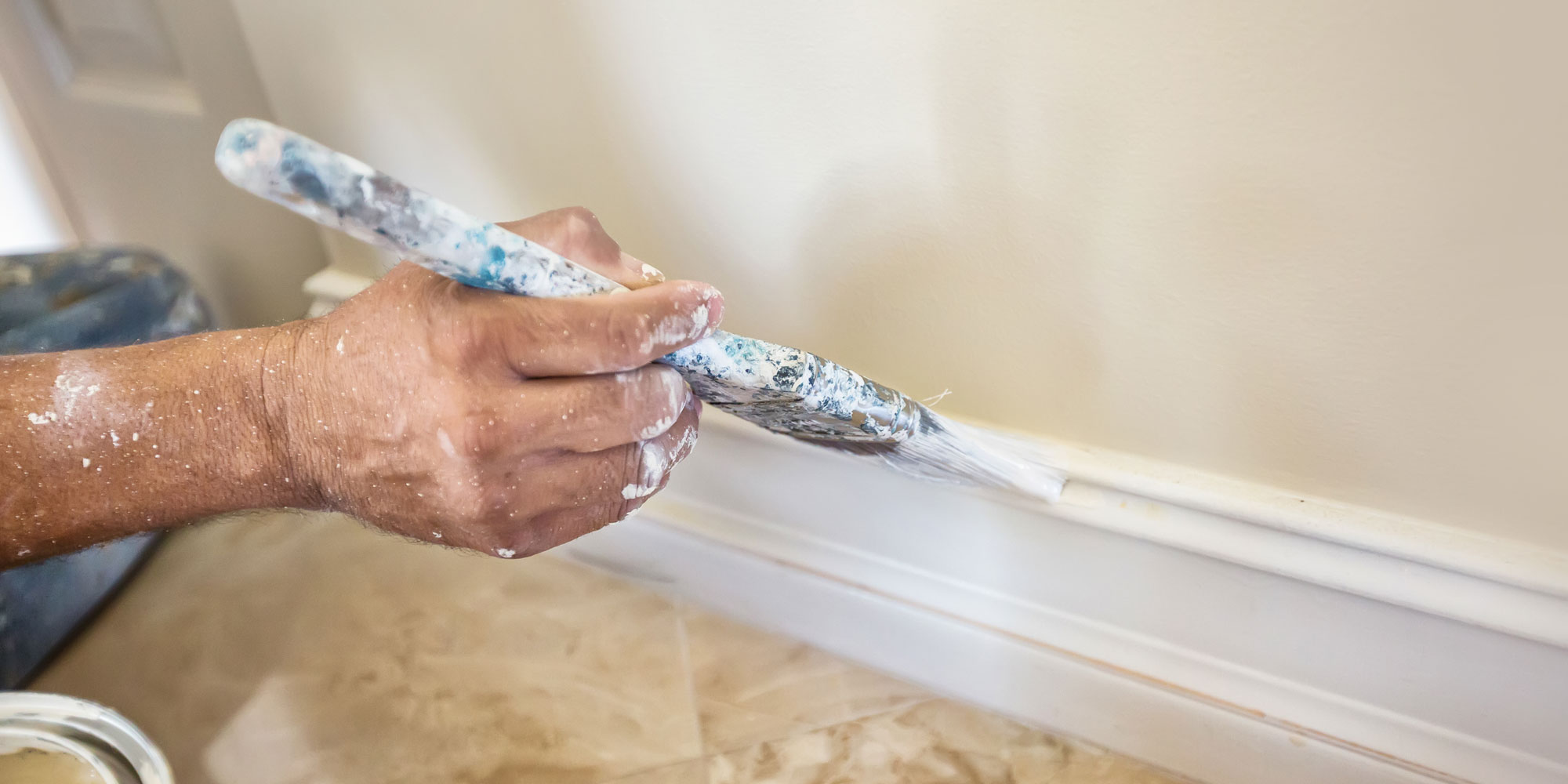
Before you get to work on your skirting boards or doors, make sure your floors are covered properly – use masking tape to keep protective sheets in place and stop paint from seeping onto the floor.
- Skirting boards – freshening up your skirting boards is best done with a smaller brush so you can make precise strokes. Use tape to avoid touching the wall and consider sanding down bumps in the skirting before you apply a second coat.
- Doorframes – again, you might want to sand down any imperfections before painting. When painting a doorframe, it's often best to start at the top so you can avoid drips as you work your way down the panel.
You should also consider the following when working with wood:
Woodwork with light blemishes
Prep the surface by sanding it down, then clean. Apply the undercoat, then the topcoat or use an all-in-one paint that combines both layers.
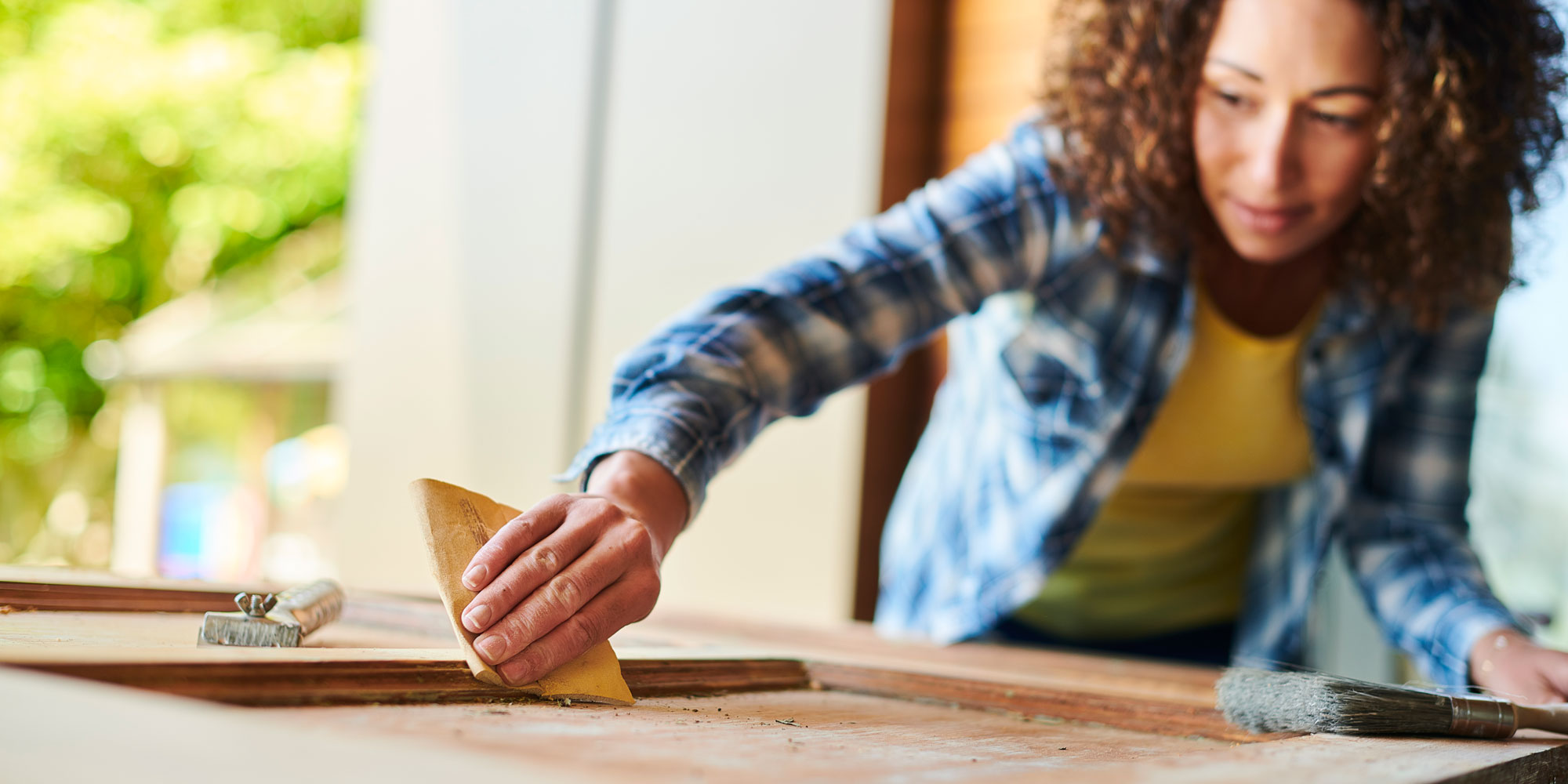
Woodwork with old or damaged paintwork
If the paintwork is in poor condition, you might need to strip it back to bare wood using a heat gun (usually around £15) – just be careful not to burn the wood. However, if you’re dealing with lead paint, which is sometimes found in older homes, don’t use a heat gun and instead seek advice from a professional. For paint with light blemishes, sanding is sufficient. Smooth out imperfections and give the surface a key – an adhesive layer that helps the new paint adhere.
Once you’ve sanded, clean the surface thoroughly with a damp cloth or industrial wipe to remove any grease and grime. You can also use sugar soap, but don’t soak the woodwork. Be mindful of the paint you choose, too – cheap paints might look fine at first, but lighter colours, such as white, can yellow prematurely.
After the surface is dry, apply a thin coat of undercoat, working with the grain. Allow it to dry fully before moving on. Finally, finish with a coat of gloss, satin, or eggshell paint, following the instructions for bare wood.
Preparing and painting bare wood
Over time, wood sap leaks out and ruins paintwork if not properly treated. Get started by applying two or three light coats of knotting solution, allowing 30 minutes between each coat.
Fill any holes, cracks or imperfections in the wood with wood filler. Apply sparingly, as using too much will leave you sanding away the excess. If a crack has formed between the join of the woodwork and the wall, fill and seal this with caulk applied with a gun.
Next, add a coat of wood primer to form an adhesive surface for the paint to cling to. Let it dry, then apply undercoat thinly to avoid drips, working with the grain of the wood for a smooth finish. On bare wood, two coats are usually enough.
Once the undercoat is dry, you can add the topcoat – you should only apply one coat.
We've surveyed thousands of shoppers to uncover the best DIY and decorating shops
How long does it take to paint a room?
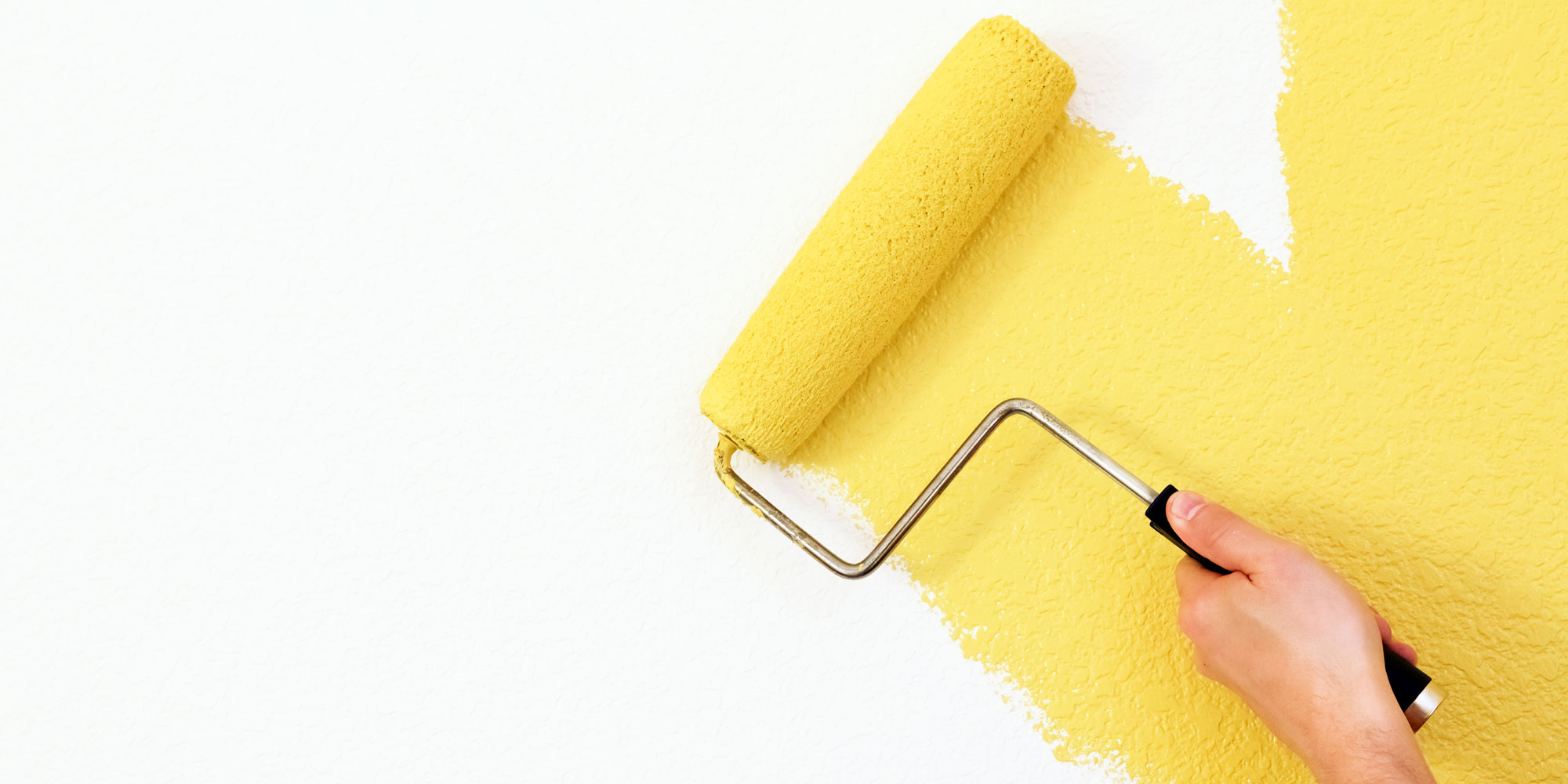
The time it takes to complete a room depends on the size of the space and the equipment used. You also need to factor in the time required to prep the area with dust sheets, as well as the drying times between coats.
If you want to paint a room quickly, make sure you're using good-quality equipment – you don't want to waste time replacing split dust sheets or rollers that have shed fibres, creating an uneven finish. You can also clear the room and lay down your masking tape the evening before you get to work.
'Be methodical and plan your day to achieve the maximum amount of application time,' says Adam.
How much does it cost to paint a room?
When shopping for paint, check the side of the tin or the brand's website for details on coverage.
For example, a 2.5L tin of Johnstone's emulsion paint is said to cover 12 square metres per litre. A single tin might be sufficient for touching up certain areas, but a larger DIY project might require more paint.
Here's an overview of several 2.5L paints from big-name brands and their claimed coverage:
- Fortress 2.5Ltr (£13.99) – 14 square metres per litre
- Macpherson 2.5Ltr (£20.69) – 16 square metres per litre
- Leyland Trade 2.5Ltr (£21.99) – 20 square metres per litre
- LickPro 2.5Ltr (£29.99) – 14 square metres per litre
- Dulux Trade 2.5Ltr (£37.99) – 17 square metres per litre
Prices correct as of February 2025.
You also need to factor in the cost of your brushes and rollers if you don't already have some tucked in a cupboard. Expect to spend around £20 for an extendable paint roller and £5-£10 for a paint tray.
Besides paint, brushes and rollers, you might also need a paint scuttle, painter's pole, dust sheet, filler, brush cleaner and sandpaper.
How much does it cost to hire a painter and decorator?
Several factors can affect how much you’ll be charged, including where you live, the age and condition of your home and how long the job takes.
The cost can also vary depending on who you hire, too. For example, a handyman could offer a lower price, but they might not have the same level of expertise as a professional painter and decorator. Remember that a painter and decorator will typically charge more.
| Job | Details | Price range | Time to do job |
|---|---|---|---|
| Paint a small room (2.1m x 2.2m) | Repaint walls and ceiling with two coats of light-coloured emulsion. Assumes existing plaster is in good condition. | £160-£350 | 1-2 days |
| Paint a medium room (3.3m x 3m) | Repaint walls and ceiling with two coats of light-coloured emulsion. Assumes existing plaster is in good condition. | £170-£450 | 2 days |
| Paint a large room (6.1m x 5m) | Repaint walls and ceiling with two coats of light-coloured emulsion. Assumes existing plaster is in good condition. | £320-£650 | 2-3 days |
Make sure you ask traders to break down the quotes they provide, so you know what you’re being charged for. It’s also a good idea to get more than one quote so you have a better idea of the going rate for your particular requirements.
Find out more with our guide: How much do painters and decorators cost?
How to clean paint brushes and rollers
It’s not ideal to leave paint on your brushes or roller overnight, but if you need to there are ways to keep them from drying out.
We suggest wrapping up your tools in a plastic wrap or bag if you plan to use the same brush or roller the next day. A brush or roller cover will also do the job. You can even store them in the fridge (while they still have paint on them) to extend their usability.
But for the best results, it’s recommended to clean your brushes and rollers after each use. Leftover paint can dry and ruin your tools, making them harder to clean and affecting the quality of your next coat of paint.
Ben notes that hot water can make the paint set on the brush, so it's best to wash them in cold water.
For tips on dealing with leftover paint, consult our expert advice on how to dispose of paint.
